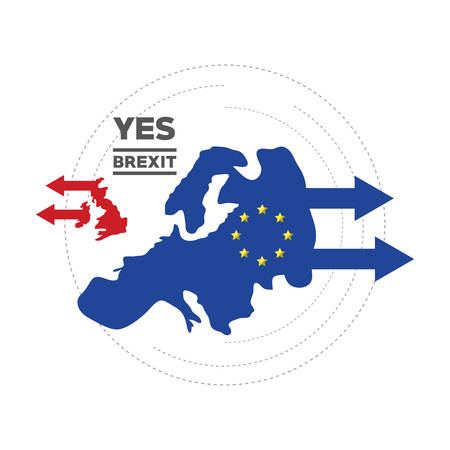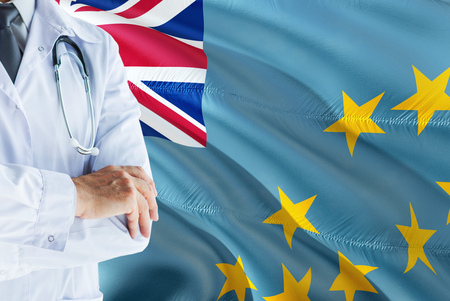Introduction to the EHIC and Its Significance Post-Brexit
The European Health Insurance Card (EHIC) has long been a familiar document for UK travellers venturing across Europe. Originally, the EHIC was introduced to provide access to medically necessary, state-provided healthcare during temporary visits to European Economic Area (EEA) countries and Switzerland, under the same conditions and at the same cost as people insured in those countries. The card was a practical embodiment of reciprocal health agreements within the EU, ensuring peace of mind for holidaymakers, students, and business travellers alike. However, following the United Kingdom’s departure from the European Union—commonly referred to as Brexit—the status and utility of the EHIC for UK residents have come under scrutiny. Many Britons are now questioning whether they can still use their EHIC abroad, what changes Brexit has brought about, and how best to ensure continued access to healthcare when travelling in Europe. Understanding these developments is crucial for anyone planning trips to EU countries in the post-Brexit landscape.
Changes to EHIC Entitlement for UK Residents
Following the UKs departure from the European Union, significant changes have been made to the way UK residents can access healthcare in Europe. The European Health Insurance Card (EHIC), once a staple for British travellers and expatriates, has undergone alterations both in terms of eligibility and function. It is crucial for UK citizens to understand these changes to avoid unexpected medical costs while travelling within the EU.
Legacy EHICs vs New UK GHIC
Before Brexit, all UK residents were eligible to apply for an EHIC, granting them access to state-provided healthcare during temporary stays in EU countries under the same conditions as local nationals. However, from 1 January 2021, new applications for an EHIC by most UK residents have ceased. In its place, the UK government introduced the Global Health Insurance Card (GHIC), designed to cover similar needs but with certain limitations and differences.
Eligibility Comparison Table
| Card Type | Who Can Apply? | Covers Which Countries? | Valid Until |
|---|---|---|---|
| Legacy EHIC | UK residents who applied before 31 Dec 2020; specific groups after Brexit (e.g., EU nationals living in UK pre-Brexit, students abroad, posted workers) | EU countries | Expiry date on card |
| UK GHIC | Most UK residents (British citizens, settled status holders) | EU countries only (not EEA or Switzerland) | 5 years from issue date |
Main Distinctions Between EHIC and GHIC Post-Brexit
- Coverage Area: The new GHIC does not extend to Norway, Iceland, Liechtenstein, or Switzerland – whereas the legacy EHIC did.
- Eligibility: Only specific groups retain rights to renew or use the EHIC after Brexit; most others must switch to a GHIC.
- Transition Period: Existing EHICs remain valid until their expiry date. Upon expiry, most holders need to apply for a GHIC unless they fall into an exempt category.
- No Automatic Replacement: Expired EHICs are not automatically replaced with a GHIC; an application is required.
Key Takeaway for UK Travellers
If you are planning travel to Europe from the UK, always check whether your existing EHIC is still valid and applicable for your destination. If not, apply for a GHIC through the NHS website. Be aware that neither card is a substitute for comprehensive travel insurance, as coverage does not extend to private healthcare or repatriation costs.

3. Where and How Britons Can Use the EHIC Post-Brexit
After Brexit, the European Health Insurance Card (EHIC) continues to offer UK travellers access to state-provided healthcare in certain European countries. However, the scope of its validity has changed, making it essential for British citizens to understand where and how their EHIC can still be used. This section clarifies which countries accept the EHIC post-Brexit, outlines transitional arrangements for existing cardholders, and highlights important exclusions.
Countries Where the EHIC Remains Valid for Britons
The UK government negotiated reciprocal healthcare arrangements with the European Union, ensuring that most EU member states continue to recognise the EHIC for UK nationals. As a result, British travellers can use their EHIC in all 27 EU countries, including popular destinations such as France, Spain, Italy, and Germany. Additionally, the card remains valid in Switzerland, Norway, Iceland, and Liechtenstein—provided that the traveller is eligible under specific conditions outlined by each country’s authorities. It is crucial to verify eligibility before travel, as these EFTA states have set their own rules on who qualifies for EHIC coverage from the UK.
Transitional Arrangements for Existing EHIC Holders
If you currently hold an EHIC issued before 1 January 2021, you can continue using it until its expiry date. After expiration, you will need to apply for a UK Global Health Insurance Card (GHIC), which replaces the EHIC for most purposes but provides similar coverage within the EU. The GHIC does not generally extend to Norway, Iceland, Liechtenstein, or Switzerland unless separate agreements are reached or maintained. Be aware that holding both cards is not permitted; you must use whichever is valid at the time of your travel.
Exclusions and Special Considerations
Certain countries and situations fall outside the post-Brexit EHIC agreement. Notably, the EHIC is not valid in non-EU European destinations such as Turkey, Andorra, Monaco, San Marino, or the Channel Islands (including Jersey and Guernsey). Moreover, private healthcare providers are not covered; only state-provided or public healthcare facilities are included under the scheme. It is also important to note that the EHIC does not replace comprehensive travel insurance; it covers necessary emergency medical treatment but does not account for repatriation costs or private care. Always check government guidance for up-to-date information before travelling.
Summary
In summary, while Brexit has altered some aspects of healthcare reciprocity, British travellers can still rely on their EHIC in most EU countries and select EFTA states under specific conditions. Familiarity with exclusions and transition arrangements ensures peace of mind and avoids unexpected costs during European travels.
4. Application and Renewal Process for EHIC and GHIC
The process of obtaining or renewing a European Health Insurance Card (EHIC) or the new UK Global Health Insurance Card (GHIC) has changed following Brexit. This section provides a clear, step-by-step guide to help UK residents navigate the application and renewal procedures, along with information on eligibility criteria and required documentation.
Step-by-Step Guide to Applying for an EHIC or GHIC
- Determine Your Eligibility: Before you begin, ensure that you meet the eligibility requirements. Generally, you must be ordinarily resident in the UK and not already covered by another countrys social security system. Special EHICs are still available for certain groups, such as EU nationals living in the UK before Brexit, students studying abroad, and some pensioners.
- Gather Required Documentation: You will need proof of identity and residency. Typical documents include:
- Passport or national ID card
- NHS number or National Insurance number
- Proof of address (e.g., utility bill, council tax statement)
- Choose the Appropriate Application Route: Applications can be made online via the official NHS website, by phone, or by post. Each method requires the same information but may have different processing times.
- Complete the Application Form: Provide accurate personal details and supporting documents as prompted during the application process.
- Submit Your Application: Once completed, submit your application electronically or send it by post if applicable.
- Receive Your Card: Upon approval, your EHIC or GHIC will be sent to your registered address. Processing times vary but typically take 7-10 working days.
Renewal Process
If your current EHIC or GHIC is close to expiry (within six months), you should initiate the renewal process using similar steps as above. You cannot renew an expired card; instead, you must apply for a new one.
Eligibility Criteria Overview
| Status | Eligible for GHIC? | Eligible for New EHIC? |
|---|---|---|
| UK Residents (post-Brexit) | Yes | No* |
| EU Nationals Living in UK pre-Brexit | No | Yes** |
| Pensioners S1 form holders | No | Yes** |
| Students Studying in EU (pre-Brexit) | No | Yes** |
| UK Residents Moving Abroad Post-Brexit | No | No |
*With exceptions for certain cross-border situations.
**Subject to specific qualifying conditions under Withdrawal Agreement rights.
Important Notes:
- The cards are free of charge; beware of unofficial websites charging fees.
- You do not need to update your card if your name changes until renewal.
- If you lose your card while abroad, contact NHS Overseas Healthcare Services for a Provisional Replacement Certificate (PRC).
5. Practical Use: Accessing Healthcare with the EHIC or GHIC
Navigating Healthcare Abroad: What You Need to Know
After Brexit, UK residents travelling in the EU must understand how to use the European Health Insurance Card (EHIC) or its successor, the Global Health Insurance Card (GHIC), when accessing medical treatment abroad. Both cards entitle you to state-provided healthcare during a temporary stay in an EU country, but their practical application comes with specific procedures, covered costs, and limitations.
How to Use Your EHIC or GHIC
When seeking medical attention in an EU country, present your EHIC or GHIC at the point of care—typically at hospitals, clinics, or doctors surgeries that are part of the public healthcare system. It is crucial to confirm beforehand that the provider accepts these cards; private facilities are generally not covered. Carrying your card at all times is recommended, as it streamlines access and reduces administrative delays.
Typical Costs Covered
The EHIC and GHIC entitle you to treatment under the same conditions and at the same cost as local residents. This usually means free or reduced-cost emergency care, doctor visits, and essential medicines prescribed by a public-sector physician. However, some countries require patients to pay a proportion of costs—known as a ‘co-payment’—which may or may not be reclaimable upon return to the UK. Routine or elective treatments are typically excluded unless deemed medically necessary during your stay.
Limitations and Exclusions
It is important to recognise what these cards do not cover. The EHIC and GHIC are not substitutes for travel insurance; they do not cover private healthcare expenses, mountain rescue in ski resorts, repatriation to the UK, or stolen/lost property. Additionally, non-EU countries (with limited exceptions such as Switzerland) do not accept either card for healthcare access post-Brexit.
In Case of Emergency Treatment
If you require emergency care and cannot present your EHIC or GHIC immediately, inform the provider as soon as possible. Retain all invoices and medical documents. In urgent cases where upfront payment is required, you may be able to seek reimbursement from NHS Business Services Authority upon your return to the UK—subject to eligibility and documentation.
Key Takeaways for UK Travellers
Always check your card’s validity before departure, research local healthcare arrangements in your destination country, and consider comprehensive travel insurance for full protection. While EHIC and GHIC provide valuable support for unplanned medical needs abroad, understanding their practical scope ensures peace of mind during your European travels.
Alternatives and Supplementary Health Cover in Europe
While the European Health Insurance Card (EHIC) and its successor, the UK Global Health Insurance Card (GHIC), offer valuable access to state-provided healthcare during temporary stays in Europe, they are not all-encompassing solutions. It is essential for UK travellers to understand the limitations of these cards and why comprehensive travel insurance remains a necessity when visiting European countries post-Brexit.
The Limitations of EHIC/GHIC Coverage
Both the EHIC and GHIC entitle holders to emergency or necessary medical treatment under the same conditions as residents of the country visited. However, this does not guarantee free healthcare; you may still be required to pay a portion of the costs if local citizens do so. Furthermore, these cards do not cover private medical care, repatriation to the UK, or non-urgent treatments. Dental care, mountain rescue, and pre-existing condition management are often excluded or only partially covered.
Importance of Comprehensive Travel Insurance
The UK insurance market strongly recommends that travellers purchase comprehensive travel insurance for any trip to Europe. Unlike EHIC or GHIC, travel insurance typically covers a wide range of scenarios: medical emergencies (including private healthcare), repatriation costs, cancellation or curtailment of travel plans, lost baggage, and personal liability. Notably, travel insurers may require proof that you have attempted to use your EHIC/GHIC where possible before covering certain expenses.
Typical UK Market Practices
Most UK-based insurers offer tiered policies—basic, standard, and premium—with varying levels of medical coverage and excess charges. Many policies now explicitly reference GHIC requirements post-Brexit, and some even include specific exclusions related to COVID-19 or other pandemics. It is crucial to declare all pre-existing medical conditions when purchasing cover, as failure to do so can invalidate claims.
Common Pitfalls and How to Avoid Them
A frequent mistake is assuming that possession of an EHIC or GHIC negates the need for travel insurance. Another pitfall is neglecting to read policy terms carefully—some activities (like skiing or water sports) require additional cover. It’s also common for travellers to underestimate the cost of repatriation or the price differential between public and private hospitals abroad. Always check whether your insurer will pay upfront for treatment or reimburse you after payment.
In summary, while EHIC and GHIC are useful safety nets for UK travellers in Europe, they are not substitutes for robust travel insurance. Combining both offers the best protection against unforeseen health-related expenses during your trip.
7. Frequently Asked Questions and Advice for UK Travellers
What is the status of the EHIC for UK citizens after Brexit?
The European Health Insurance Card (EHIC) previously issued by the UK remains valid only until its expiry date. After that, British nationals must apply for the new UK Global Health Insurance Card (GHIC), which offers similar coverage across most EU countries. It is essential to check your card’s expiry and apply for a GHIC if necessary before your trip.
Can I still use my existing EHIC in Europe?
If you hold an EHIC issued before 1 January 2021, you may continue using it in EU countries until it expires. However, it is not valid in Norway, Iceland, Liechtenstein or Switzerland post-Brexit. Once expired, you must switch to a GHIC for continued access to state-provided healthcare while travelling in the EU.
Does the EHIC/GHIC cover all healthcare costs abroad?
No. Both EHIC and GHIC entitle you to medically necessary state-provided healthcare at the same cost as residents of the country you are visiting—sometimes free, sometimes at a reduced rate. Neither card covers private treatment, mountain rescue, repatriation, or ongoing medical conditions that require scheduled treatment abroad. Comprehensive travel insurance is strongly recommended to cover these gaps.
Should I still buy travel insurance if I have an EHIC or GHIC?
Absolutely. The EHIC/GHIC is not a substitute for travel insurance. It does not cover private medical care, stolen property, cancellations, or repatriation to the UK. Always purchase comprehensive travel insurance that includes medical cover and repatriation when travelling in Europe.
How do I apply for a GHIC?
You can apply for a GHIC free of charge via the official NHS website. Beware of unofficial sites charging fees for this service. The application process requires basic personal details and your National Insurance number.
Is there any difference between EHIC and GHIC coverage?
The GHIC covers most EU countries but does not include non-EU EEA countries such as Norway, Iceland, Liechtenstein, or Switzerland, unlike the old EHIC. Check specific country agreements before travelling to ensure you are adequately protected.
Practical Tips for British Travellers
- Check your EHIC’s expiry date well ahead of travel.
- Apply early for a GHIC if needed—it can take up to two weeks to arrive.
- Always carry your card with you while abroad.
- Keep digital and paper copies of both your health insurance card and travel insurance policy.
- Familiarise yourself with local emergency numbers and healthcare procedures in your destination country.
By understanding how the post-Brexit rules affect your health cover in Europe and preparing accordingly, you can avoid unexpected costs and ensure peace of mind during your European travels.


